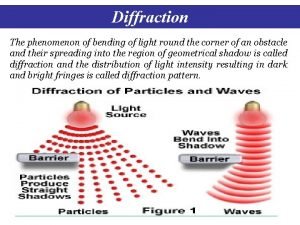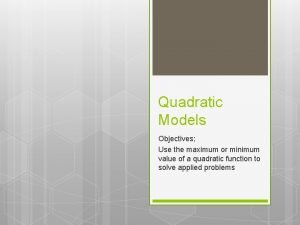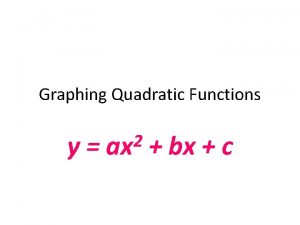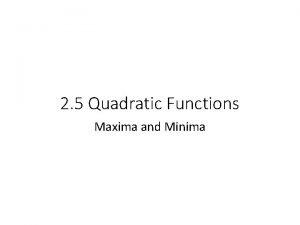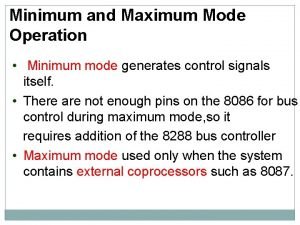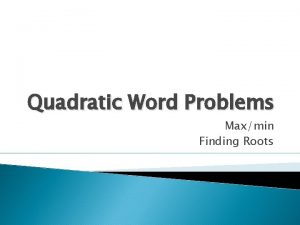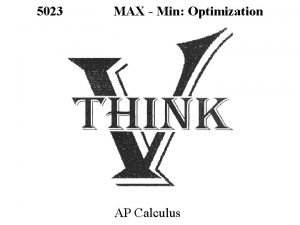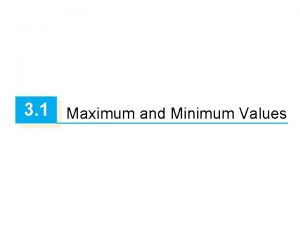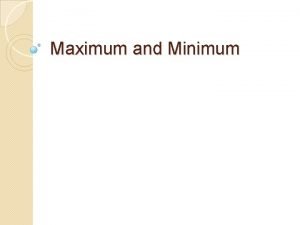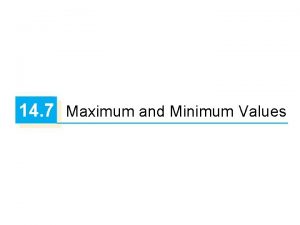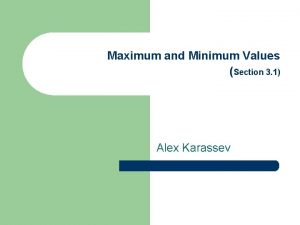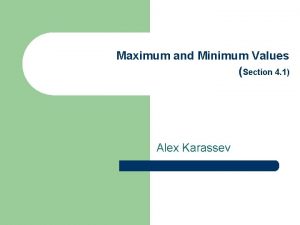Section 15 7 Maximum and Minimum Values MAXIMA









- Slides: 9

Section 15. 7 Maximum and Minimum Values

MAXIMA AND MINIMA A function of two variables has a local maximum at (a, b) if f (x, y) ≤ f (a, b) when (x, y) is near (a, b). The number f (a, b) is called a local maximum value. If f (x, y) ≥ f (a, b) when (x, y) is near (a, b), then f (a, b) is a local minimum value. If the inequalities above hold for all points (x, y) in the domain of f, then f has an absolute maximum (or absolute minimum) at (a, b).

Theorem: If f has a local maximum or minimum at (a, b) and the first-order partial derivatives of f exist there, then fx(a, b) = 0 and fy(a, b) = 0

CRITICAL POINTS A point (a, b) is called a critical point (or stationary point) of f if fx(a, b) = 0 and fy(a, b) = 0, or one of these partial derivatives does not exist.

SECOND DERIVATIVES TEST Suppose the second partial derivatives of f are continuous on a disk with center (a, b), and suppose that fx(a, b) = 0 and fy(a, b) = 0. Let (a) If D > 0 and fxx(a, b) > 0, then f (a, b) is a local minimum. (b) If D > 0 and fxx(a, b) < 0, then f (a, b) is a local maximum. (c) If D < 0, then f (a, b) is not a local maximum or minimum.

NOTES ON THE SECOND DERIVATIVES TEST 1. In case (c) the point (a, b) is called a saddle point of f and the graph crosses its tangent plane. (Think of the hyperbolic paraboloid. ) 2. If D = 0, the test gives no information: f could have a local maximum or local minimum at (a, b), or (a, b) could be a saddle point. 3. To remember this formula for D, it is helpful to write it as a determinant:

CLOSED SETS; BOUNDED SETS • A boundary point of a set D is a point (a, b) such that every disk with center (a, b) contains points in D and also point not in D. • A closed set in is one that contains all its boundary points. • A bounded set in is one that is contained within some disk.

EXTREME VALUE THEOREM FOR FUNCTIONS OF TWO VARIABLES If f is continuous on a closed, bounded set D in , then f attains an absolute maximum value f (x 1, y 1) and an absolute minimum value f (x 2, y 2) at some points (x 1, y 1) and (x 2, y 2) in D.

FINDING THE ABSOLUTE MINIMUM AND MAXIMUM To find the absolute maximum and minimum values of a continuous function f on a closed bounded set D: 1. Find the values of f at the critical points of D. 2. Find the extreme values of f on the boundary of D. 3. The largest of the values from steps 1 and 2 is the absolute maximum value; the smallest of these values is the absolute minimum value.

